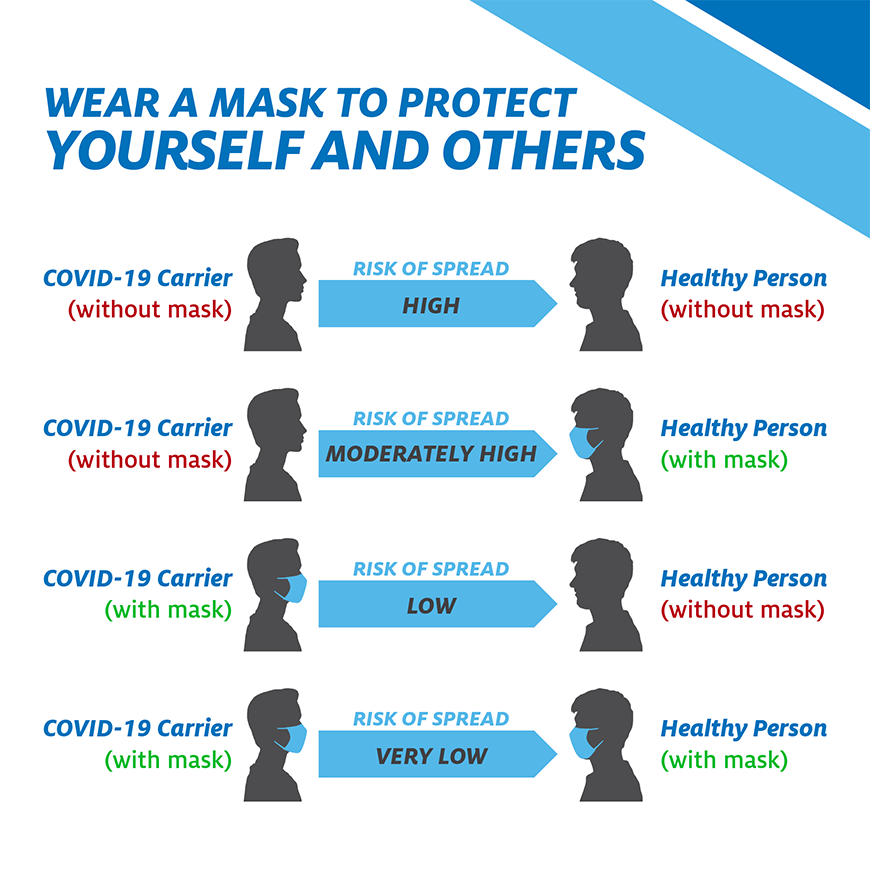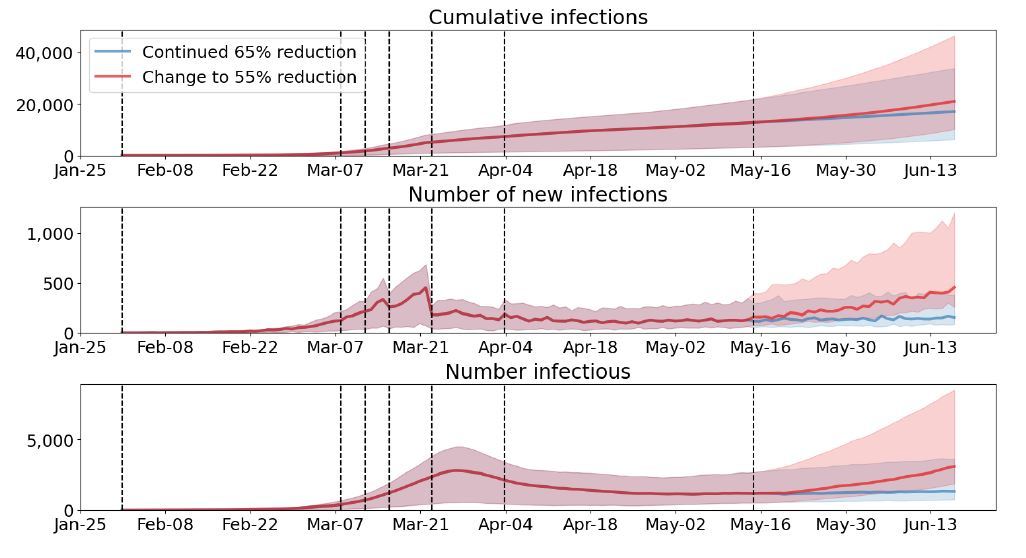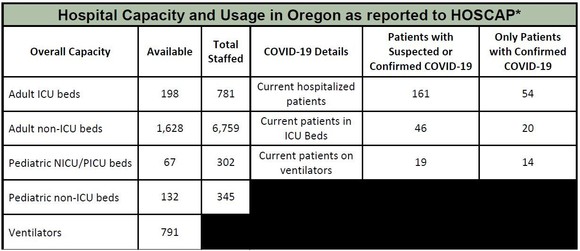|
Dear Friends and Neighbors,
There have been a lot of announcements this week and, frankly, it’s been hard to keep track of everything. So, I’d like to start off by focusing on two things: retail stores opening up and face coverings.
Earlier this week, I noted new guidelines for retail stores to reopen. However, I did not make it clear that, as of today, retail stores can open statewide under this guidance, not only in counties approved for Phase 1 of reopening. As a reminder, that guidance is here.
Other than essential stores, like grocery stores, most retail establishments didn’t know how they would be able to keep people safe, and because of Stay Home, Save Lives, foot traffic had really ground to a halt. But that's starting to change, so it’s important to keep in mind physical distancing and other precautions even more than ever.
Which brings me to face coverings. Last weekend, I went shopping at my local Lowe’s. The Lowe’s staff were amazing – their team members had masks and gloves, they were directing people to safe distances while waiting in line to check out, etc. However, I noticed quite a few folks not wearing face coverings.
Remember, covering your nose and mouth helps keep yourself AND other people safe and healthy. You might have the virus and feel fine, but you can still make someone else sick. The graphic below explains why. I know it can be inconvenient, but please try to wear a mask to protect yourself and others. The guidelines on the use of face coverings are available here.

As these new graphs from the Institute for Disease Modeling show, more interactions increase the risk of spreading coronavirus.

So, as we enter our first weekend in a new era of this pandemic, let’s continue to act with the same caution that we did when we first understood just how serious and contagious this virus really is.
Starting today, child care facilities can reopen statewide if they are following guidance from the Oregon Health Authority, which I have posted below.
Child Care facilities are required to do the following in terms of group size and ratio:
- Limit the number of children in rooms:
- Registered Family (RF) – may have one group of up to 10 children. Note: RF providers do not have square footage requirements related to the number of children in care
- Of the 10 total children, there may be no more than six children ages preschool and younger and, of these six, no more than two children under 24 months.
- Certified Family (CF) – may have two stable groups of up to 10 children in separate areas of the home and no more than 16 children total. Each group of children must be in a space that meets the minimum of 35 square feet per child.
- Each group of children must meet staff/child ratios as defined in Oregon Administrative Rule 414‐350‐0120, found within the Certified Child Care Rules (page 28).
- Certified Center (CC) – may have one stable group of up to 10 children per classroom. Large rooms may be divided into two rooms with the approval of a child care licensing specialist. See OHA-ELD COVID-19 Safety Requirements and ELD Temporary Changes to Child Care Rules in Response to COVID-19 State of Emergency for further instructions. Each group of children must be in a space that meets the minimum of 35 square feet per child.
- CCs must maintain the following staff to child ratios (ratios for mixed age groups of children are based on the youngest child in the group). See table below.

Child Care providers are required to:
- Ensure that groupings are stable (i.e., the same adult staff or volunteers and children are within the same group each day).
- Provide care in stable groups of 10 children; however, a program may allow some families to “swap” slots between days. For example – Child A attends Monday, Wednesday, Friday and Child B attends Tuesday and Thursday. However, there may not be more than 12 children in a stable group.
- Provide care in stable groups that use the same physical space each day.
- Move children from one stable group to another only on a permanent basis (e.g., when children age out of their original classroom) and not temporarily.
- Provide the same “floater” staff (i.e., staff that provide relief for staff during breaks) for the same stable group each day to the extent possible.
- Allow only one stable group of children in shared spaces at one time (bathrooms, outdoor play areas, eating spaces). Sanitization practices must be observed in between uses for different groups.
- For home-based providers, require that household members that do not assist in the child care program physically distance from stable groups throughout the day.
- If a provider’s own children or other household members are participating as part of the group, they must be counted as part of the overall number of allowable children within the group.
- Implement adequate sanitization protocols between AM/PM classes using the same physical space, including sanitization of food preparation areas, high-touch surfaces, toys and materials. A maximum of two groups of children may be allowed in any one classroom over the course of the day.
- Stagger arrival and drop-off times or put in place other protocols to limit contact between families and with staff.
Child Care providers are required to do the following in terms of operations:
- Continue to prioritize care for essential workers and may also serve all families who return to work in phased reopening.
- Adhere to ELD-OHA COVID-19 Safety Requirements and comply with OHA-ELD COVID-19 Safety Requirements and ELD Temporary Changes to Child Care Rules in Response to COVID-19 State of Emergency at all times.
- Maintain approved OHA-ELD cleaning protocols for surfaces, linens, electronics, toys to prevent the spread of COVID-19.
- Provide on-going training to staff on cleaning protocols and COVID-19 safety requirements.
- Permit staff to wear cloth, paper or disposable face coverings if they choose.
- Require face covering use for floater staff and staff conducting daily health checks of the children.
- Keep daily logs for each stable group that conform to the following requirements to support contact tracing of cases if necessary:
- Child name
- Drop/off pick up time
- Adult completing both drop/off pick up
- All staff that interact with stable group of children (including floater staff)
- Hours child was in care
The availability of child care will be critical as we work together to get more people back to work. I really appreciate child care providers for doing everything they can to support working parents in these uncertain times.
- TriMet will require all bus and train passengers to wear masks starting Wednesday, May 20. Willamette Week has more details here.
- The Oregon Health Authority reported 63 more confirmed cases of coronavirus, bringing the statewide total to 3,470 confirmed cases. The agency announced one new presumptive case. There are 3,541 confirmed and presumptive cases combined. There have been no new confirmed deaths. There are 137 Oregonians who have died from confirmed cases of the virus.


As businesses start to reopen or contemplate reopening, they are wondering about how to get personal protective equipment (PPE) for their employees. One resource is Oregon’s Small Business Navigator website here. This is a comprehensive list of PPE manufacturers and distributors. Employers can use this as a resource to acquire PPE and ensure a safer working environment in compliance with state guidelines. Business Oregon anticipates more resources in this area and more user-friendly information. You can also call the Small Business Navigator hotline at 833-604-0880 for more help.
The Oregon Department of Veterans’ Affairs has developed a new online tool to help guide veterans and their families to assistance during the pandemic and inform them of any changes to their earned benefits. The Veteran Resource Navigator is designed to assist veterans from all walks of life in finding the federal, state and local resources that are most needed for their unique circumstances in 2020.
This tool includes resources that are organized by topic, including Economic, Health, Education, Housing and Food, and other resources. The new online Veteran Resource Navigator is available on ODVA’s website now at www.oregon.gov/odva. Veterans can also access additional assistance by calling an ODVA Veteran Resource Navigator at 1-800-692-9666.

To read past newsletters, you can go to this link. For up to date information, please check this link to the Oregon Health Authority where regular updates are posted: https://www.oregon.gov/oha/ERD/Pages/News-Releases.aspx
Please email me at Rep.TinaKotek@oregonlegislature.gov if you have specific concerns that have not been addressed by the OHA. Our office will do all we can to help and protect all Oregonians.
Thank you for reading! We will get through this together.
Best,

Tina Kotek
State Representative
House District 44
Speaker of the House
email: Rep.TinaKotek@oregonlegislature.gov I phone: 503-986-1200
address: 900 Court St NE, H-269, Salem, OR 97301
website: http://www.oregonlegislature.gov/kotek
|